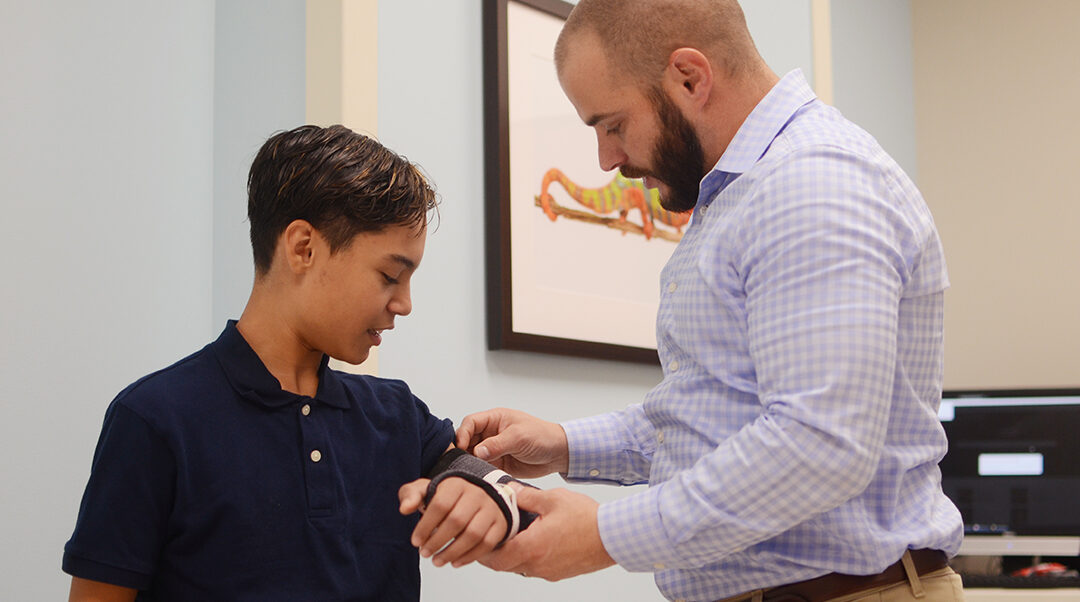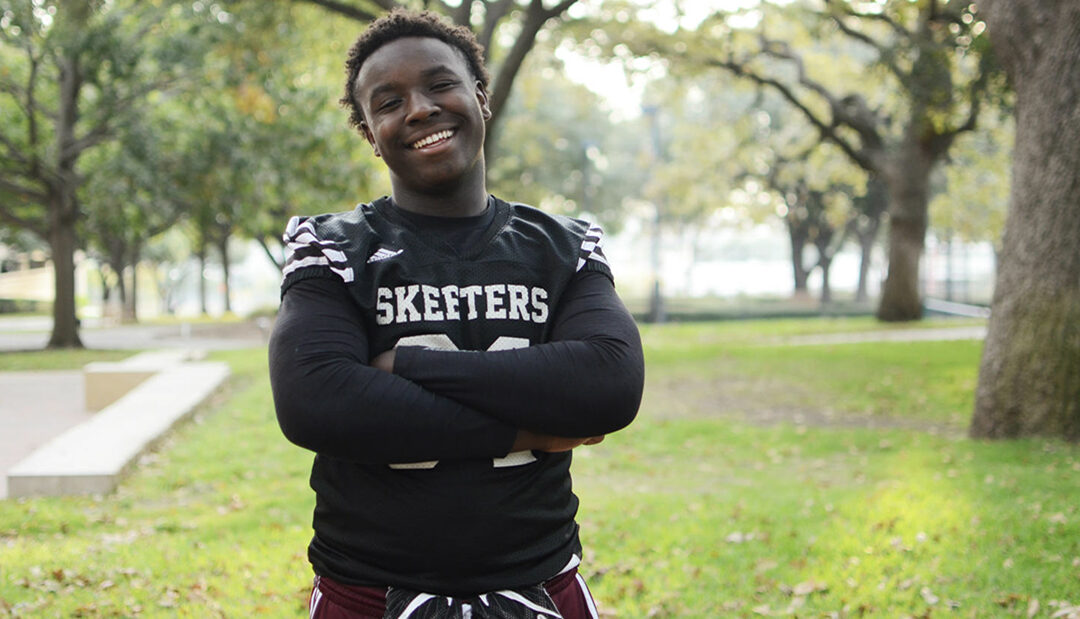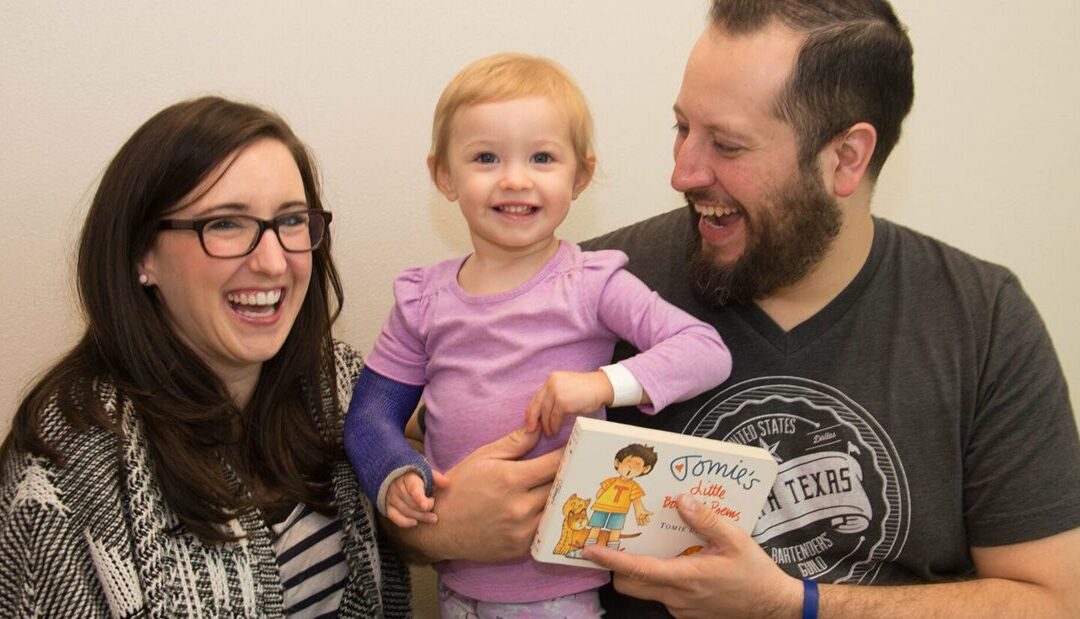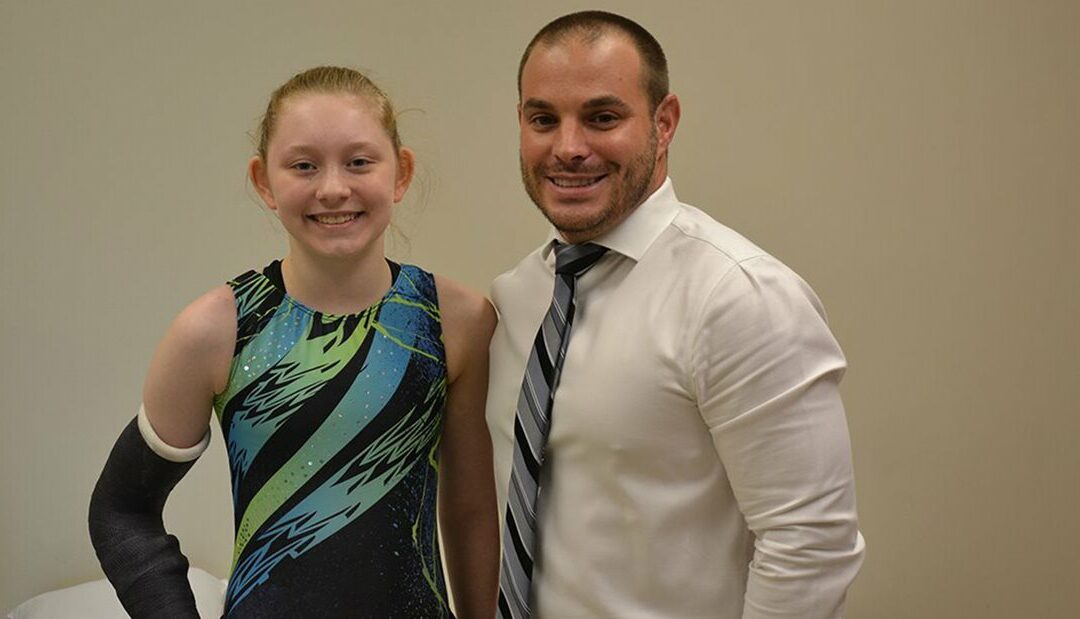A young gymnast’s experience with our Fracture Clinic
When Riley broke her arm during a front handspring at the gym, she and her mom were both afraid that she would need surgery. Thankfully, a friend at her gym told them exactly where to go for expert fracture care. On their first visit to Scottish Rite Hospital, they met with Gerad Montgomery, a certified pediatric nurse practitioner who specializes in nonoperative fracture care. He explained to them that surgery was not the only option for Riley’s injury. After discussing the pros and cons of each treatment option and getting answers to all of their questions, Riley and her mother decided to continue care without surgery. Fractures like Riley’s can be challenging to manage and often require a series of several specialized casts to keep the bones aligned correctly and allow them to heal.
Riley tells us she has gotten lots of questions about her cast, which was specially molded to help align her bone. “I tell people my bones are sticking out,” Riley said with a smile as she talked about the bulges from spacers in the cast. Then, she laughed saying she assures them that her bones are fine.
“When I called to ask about some feelings Riley was describing, Gerad asked to speak directly with her about what she was feeling,” her mom explained. She and Riley thought this was a great example of the outstanding service they received from the moment they met the Fracture Clinic team.
Riley is now back in the gym and able to participate in some activities. She is still wearing a cast, since the healing process takes time. “She’s happy this doesn’t keep her out of her training,” her mom and former coach tells us. “In pediatrics and sports medicine, we look for ways to keep kids engaged in their activities; we know this is good for them physically and psychologically,” Gerad says.
Bumps and bruises are sometimes a normal part of kids being kids. However, if your child breaks a bone, you can call our Fracture Clinic directly at 469-515-7200.
To learn more about our Fracture Clinic on our North Campus, visit our Fractures page.





